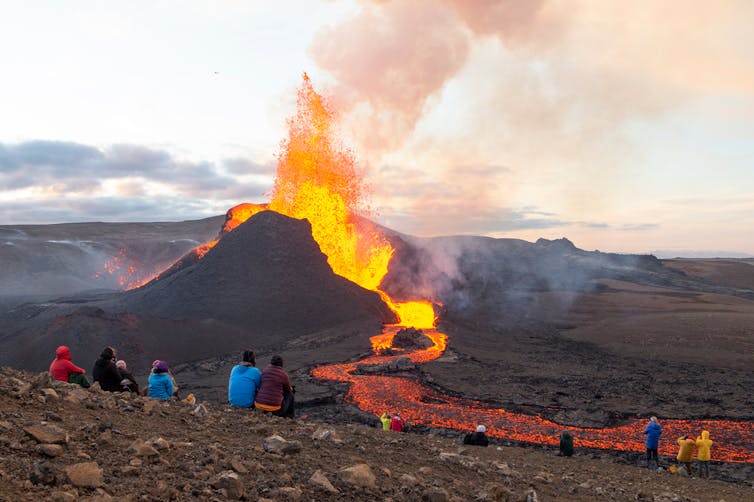Precise measurement of the warming and cooling of transported air masses for the first time
FULL STORY
Special features of the Arctic climate, such as the strong reflection of the sun's rays off the light snow or the low position of the sun, amplify global warming in the Arctic. However, researchers are often faced with the challenge of modelling the underlying climatic processes in order to be able to provide reliable weather forecasts. Scientists from the HALO (AC)³ aircraft campaign have succeeded in precisely measuring the movement of air masses from and to the Arctic. This will contribute to a better understanding of the processes accelerating climate change in the region. Their research has been published in a European Geosciences Union paper.
"We want to make fundamental and ground-breaking progress in our understanding of Arctic amplification and improve the reliability of models for predicting the dramatic warming in the Arctic," says Professor Manfred Wendisch, Director of the Institute for Meteorology at Leipzig University and lead author of the study.
In mid-March 2022, the large-scale international research campaign HALO (AC)³ began its investigation of changes in air masses in the Arctic.
Researchers from Leipzig University and several other research institutions are involved.
During the campaign, they used special aircraft to study the movement of air masses to and from the Arctic via northward moist- and warm-air intrusions (WAIs) and southward marine cold-air outbreaks (CAOs). Two low-flying aircraft and one long-range, high-altitude research aircraft were flown in close formation whenever possible.
"We observed air mass transformations over areas of open ocean, the marginal sea ice zone and the central Arctic sea ice," says Wendisch.
The HALO AC³ aircraft campaign was conducted over the Norwegian and Greenland Seas, the Fram Strait, and the central Arctic Ocean in March and April 2022. A new observation strategy was used to track the changes in the air masses. This enabled the researchers to measure the moving-air parcels twice along their transport pathway. The meteorologist explains: "This allowed us to quantify the warming and cooling of the transported air masses for the first time. For example, we have shown that cold air that breaks out of the Arctic and heads south warms up to three degrees Celsius per hour on its way from the sea ice to the open sea. In addition, the humidity of the air increases as it moves south." The scientists also studied changes in cloud properties as air masses are transported. This unprecedented data is currently being compared with calculations from the German weather forecast model.
Story Source:
Materials provided by Universität Leipzig. Note: Content may be edited for style and length.
Journal Reference:Manfred Wendisch, Susanne Crewell, André Ehrlich, Andreas Herber, Benjamin Kirbus, Christof Lüpkes, Mario Mech, Steven J. Abel, Elisa F. Akansu, Felix Ament, Clémantyne Aubry, Sebastian Becker, Stephan Borrmann, Heiko Bozem, Marlen Brückner, Hans-Christian Clemen, Sandro Dahlke, Georgios Dekoutsidis, Julien Delanoë, Elena De La Torre Castro, Henning Dorff, Regis Dupuy, Oliver Eppers, Florian Ewald, Geet George, Irina V. Gorodetskaya, Sarah Grawe, Silke Groß, Jörg Hartmann, Silvia Henning, Lutz Hirsch, Evelyn Jäkel, Philipp Joppe, Olivier Jourdan, Zsofia Jurányi, Michail Karalis, Mona Kellermann, Marcus Klingebiel, Michael Lonardi, Johannes Lucke, Anna E. Luebke, Maximilian Maahn, Nina Maherndl, Marion Maturilli, Bernhard Mayer, Johanna Mayer, Stephan Mertes, Janosch Michaelis, Michel Michalkov, Guillaume Mioche, Manuel Moser, Hanno Müller, Roel Neggers, Davide Ori, Daria Paul, Fiona M. Paulus, Christian Pilz, Felix Pithan, Mira Pöhlker, Veronika Pörtge, Maximilian Ringel, Nils Risse, Gregory C. Roberts, Sophie Rosenburg, Johannes Röttenbacher, Janna Rückert, Michael Schäfer, Jonas Schaefer, Vera Schemann, Imke Schirmacher, Jörg Schmidt, Sebastian Schmidt, Johannes Schneider, Sabrina Schnitt, Anja Schwarz, Holger Siebert, Harald Sodemann, Tim Sperzel, Gunnar Spreen, Bjorn Stevens, Frank Stratmann, Gunilla Svensson, Christian Tatzelt, Thomas Tuch, Timo Vihma, Christiane Voigt, Lea Volkmer, Andreas Walbröl, Anna Weber, Birgit Wehner, Bruno Wetzel, Martin Wirth, Tobias Zinner. Overview: quasi-Lagrangian observations of Arctic air mass transformations – introduction and initial results of the HALO-(AC)³ aircraft campaign. Atmospheric Chemistry and Physics, 2024; 24 (15): 8865 DOI: 10.5194/acp-24-8865-2024
Cite This Page:MLA
APA
Chicago
Universität Leipzig. "A better understanding of climate change: Researchers study cloud movement in the Arctic." ScienceDaily. ScienceDaily, 4 September 2024. <www.sciencedaily.com/releases/2024/09/240904130911.htm>.








